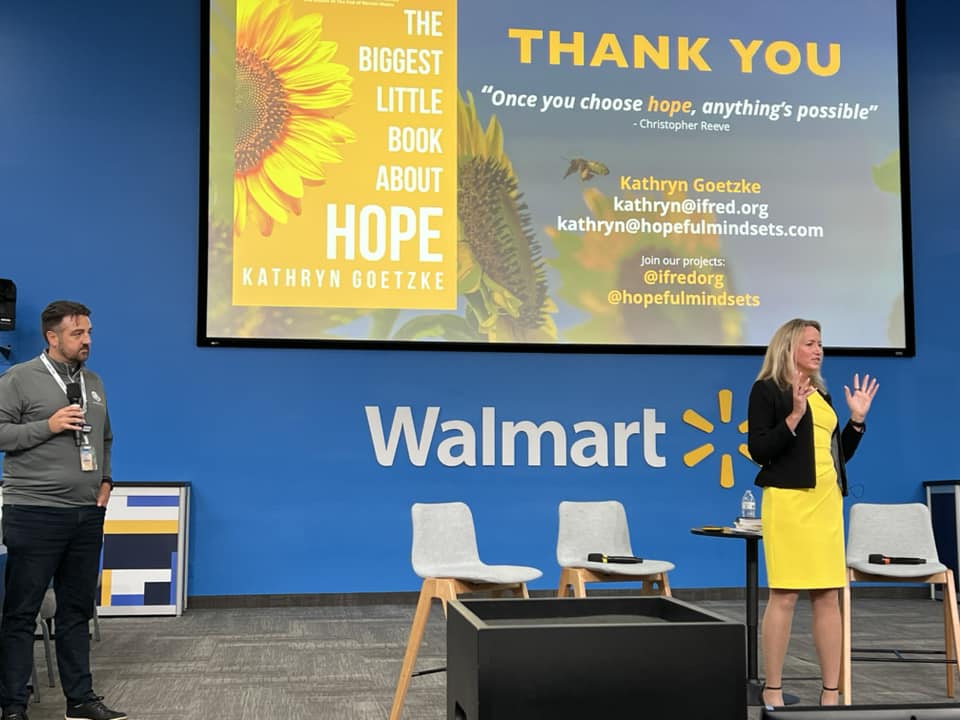Hope: Empowering Cities
Contrary to popular belief, Hope isn’t just wishful thinking:
Dr. Myron Belfer, a Hope expert, describes Hope as “something we have control over. It’s a skill and a motivation, so it is something that we can work towards.”
Dr. Dan Tamasulo says that“Hope is a reorganization of perceptions to foster the belief that you have control in the future.”
Dr. Shane Lopez explains that “Hope is the feeling you have when you have a goal, are excited about achieving your goal, and then figure out how to achieve your goal.”
We have combined a number of these principles into the Hopeful Cities Playbook and have developed the following definition using hopelessness as the antithesis:
Hope is a vision for something in your future, fueled by both positive feelings and inspired actions.
We’ve created The Hope Matrix visual to make it easier to understand. Any challenge in life can be navigated using Shine Hope™ skills to move from hopelessness to Hope.

Why does it matter?
Researchers have found that individuals with higher levels of Hope are more likely to achieve their goals, subsequently improving their well-being (Moss, 2018). The goals are met because these individuals have high agency-related Hope thoughts (i.e., the belief that they can attain their goals and are successful in life) and pathways-related Hope thoughts (i.e., the belief that they can overcome barriers and develop alternative solutions to goals when needed (Oettingen & Gollwitzer, 2002).
The benefits of nurturing Hope are far-reaching and transformative. Research consistently underscores that people higher in Hope have numerous positive outcomes, such as:
- Improved education: Hope drives significant improvements in education, surpassing intelligence and prior academic performance, predicting a GPA boost of 0.21 points per additional point in Hope score, and fostering higher graduation rates, especially in communities facing considerable hardship and adversity (Bashant, 2016; Curry et al., 1997; Day et al., 2010; Gallagher et al., 2017).
- Improved work performance: By reducing anxiety and depression while significantly boosting workplace productivity by 14%—outperforming measures of intelligence, optimism, and self-efficacy—Hope plays a pivotal role in enhancing employee retention, job engagement, sleep quality, and expedited recovery times after injuries, ultimately mitigating substantial financial losses for employers due to hopelessness (APA, 2013a; APA, 2013b; Baraket-Bojmel et al., 2023; eHansan et al., 2022; Trezise et al., 2018; Warwick, 2012).
- Improved health: Through reducing risky behaviors, decreasing the risk of chronic health conditions, improving medication adherence to curb healthcare costs, expediting recovery post-injury, fostering resilience against stress, and alleviating depression and anxiety—leading causes of disability globally—Hope significantly contributes to overall health (Brooks et al., 2016; Harvard T.H. Chan, 2021; Hill et al., 2018; Morgado & Cerqueira, 2018; Ong et al., 2018; Warwick, 2012).
- Improved social connections: Individuals with higher levels of Hope have greater positive connections with others, are more collaborative, and are better problem-solvers, which is necessary for strengthening the means of implementation and cultivation of a healthy community (Merolla et al., 2021)18.
- Improved SDG attainment: Hope-driven initiatives prioritize well-being, promoting mental health and social support systems essential for achieving multiple SDGs. Moreover, this approach encourages long-term vision and planning, aligning city policies with the global sustainability agenda. Learn about specific SDGs and Hope here.

There is a robust scientific field studying Hope, and all of the research keeps telling us the same thing: Hope is incredibly important. You can see the extensive literature about the power of Hope on our website.
However, we are not born with Hope; it is a skill that must be developed and practiced, and we all have different starting levels of Hope.
Harnessing Hope as a strategy can revolutionize cities. By fostering a culture that understands, cultivates, and practices Hope together, communities can undergo numerous positive changes. Hopeful individuals contribute to a more vibrant workforce, boosting productivity and reducing absenteeism. Effective leadership that nurtures Hope fosters trust, stability, and prolonged employee retention, which can result in a thriving economy.
Moreover, when cities prioritize Hope, they invest in their residents’ mental and emotional well-being. This proactive effort can prevent adverse outcomes linked to hopelessness, such as crime and health-related challenges; it also helps foster a sense of community cohesion and shared purpose.
